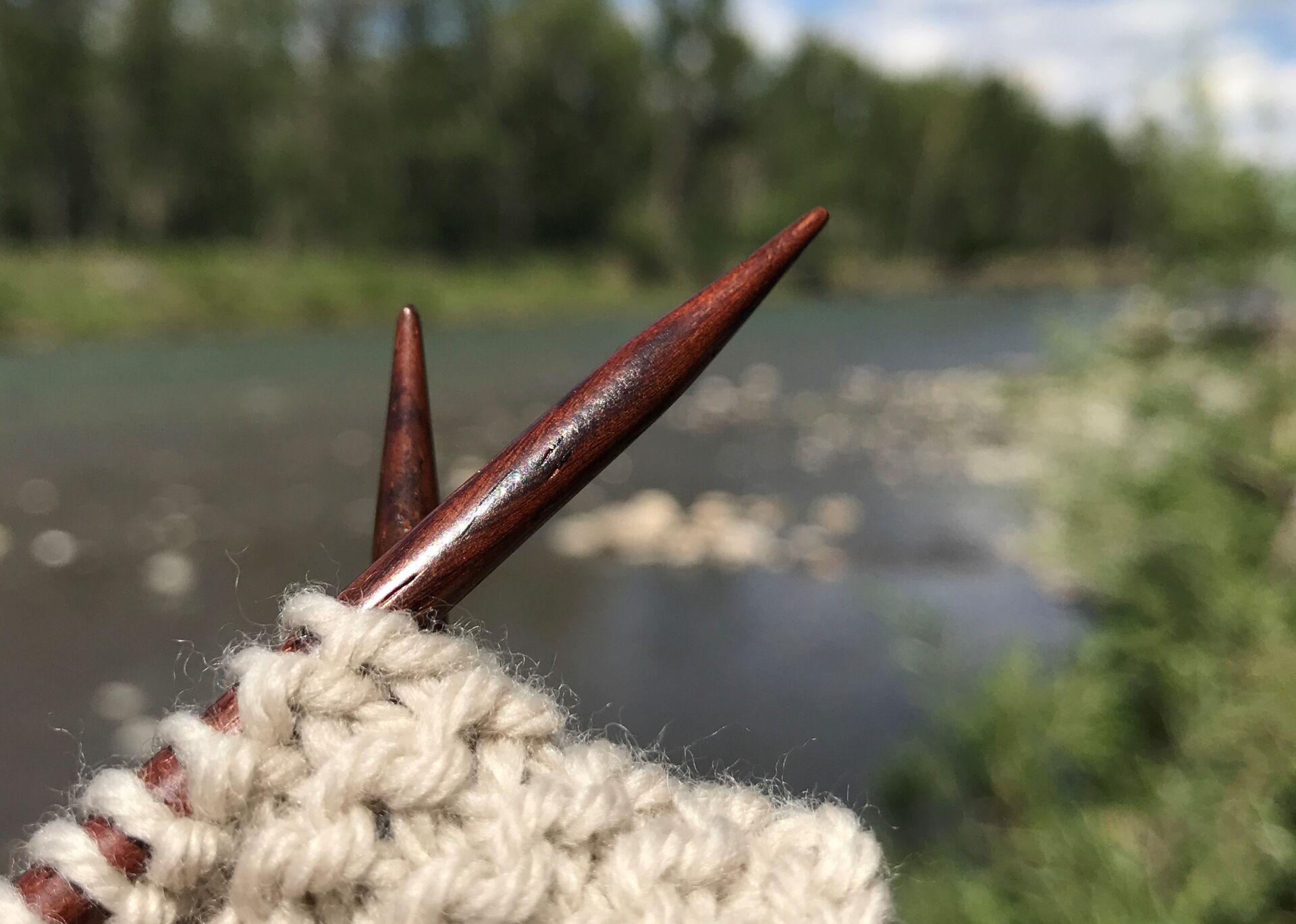You’re sitting down to a new project and one of the first questions presents itself: how to choose the best knitting needles for this piece? There are a lot of options, and selecting the best knitting needle can feel daunting. Don’t worry! Here are three simple tips to help you choose:
1. Circular vs straight knitting needles
Often, a pattern will specify straight or circular needles, but there’s also a little wiggle room in this choice. If a pattern is worked in the round, you’ll need circular needles, but you can also knit patterns worked flat on a circular needle. In this case, straight vs circular needles is a matter of preference; try both and see which is the best knitting needle for you.
If you’re using circular needles, the next question is which wire length to use? To answer this, think ahead to the widest or largest circumference part of the project you’ll create – you’ll need a wire length to match this. And finally, you may be asking ‘Do I need DPNs?’ The answer here again is, it’s a matter of preference. DPNs (Double-Pointed Needles) are used to work in the round with a small diameter, for example for socks or sweater sleeves. I personally love using DPNs for this, but you can also use two circular needles and the magic loop technique to tackle smaller diameter parts of projects.
2. Material: wood, metal, or plastic
The first question you might ask yourself is which material makes for the best knitting needles. There’s a lot of room for personal preference on this point, but there are some key differences to keep in mind. Metal and plastic needles are more slippery, so will move the stitches more easily. Wood needles offer a little more grip. Try both and see which works better for you. This can vary by project and especially by fibre type of your yarn. For slippery yarn, you may want to choose wooden needles. If you’re using a yarn with a lot of friction, metal or plastic might work best.
3. Diameter of the knitting needles
Finally, you’ll be asking yourself how to choose the best knitting needle diameter. Almost all patterns will list a gauge, indicating how many stitches and rows you should get in a test swatch of a given size. If you adjust your needle diameter until you get this gauge, you can expect your finished item to match the dimensions listed in the pattern.
You may wonder if gauge is always critical, and whether you can choose a different needle diameter. In some cases you can feel free to drift from gauge and choose the needle diameter that creates a looseness or tightness that you like. This includes items where size and fit aren’t critical, for example scarves and shawls. Remember that if you opt for a different needle diameter, your item will turn out a different size from the specifications in the pattern. If you’re ok with this, experiment, have fun with it, and see what you think are the best knitting needles for your project!
Check out our Knit Collections or try our unique Knitting Patterns and Knit Kits on your own!

